Class Races with Flying Scots, Lasers, Sunfish and more!
I volunteered to help out on the water for the 2011 Charlotte Harbor Regatta, where we had quite a flotilla of signal boats, mark set boats, and safety boats organized (more or less) to set up races in three different areas of Charlotte Harbor, FL. I was assigned to use our 15' Boston Whaler as the safety boat for Circle 1, the small boat fleets, consisting of Flying Scots, Lasers, Precision 15s, Sunfish, and 2.4 Meter Boats, some of which were being sailed by disabled sailors.
We arrived in the racing area an hour before start time, and not having a better use for us, the race committee sent us over to the Port Charlotte Yacht Club to help tow boats out of the basin channel. We arrived and found a row of Flying Scots getting ready to go.

They were using the new hoist at the Port Charlotte Yacht Club to launch the 2.4 Meter sailboats next to the wheelchair accessible floating dock. We had several disabled sailors participating in this year's event, and all are looking forward to hosting the 2012 Disabled Sailing World Championships next year, when we should see a lot more of these boats.
We towed some Flying Scots out the channel, which was more or less upwind that day and too narrow for those boats to tack, but a couple of the 2.4m sailors put on a little show by tacking their way out the basin and out the channel. There is plenty of room of your boat is small enough! Not wanting to delay the rest of the fleet, we towed the last one out. The smiling sailor's head looks like it was pasted into the wrong photo!

It was a great day for sailboat racing, with plenty of breeze creating a bit of chop and ensuring a wet and wild ride in the small boats. It seemed likely that the racers would break some things, and sure enough, they did as the day wore on.
I was wondering why the 2.4m sailboats have a window so high up in the sail? The sailor's head is at deck level, but they need a window way up there? To spot air traffic? It makes more sense when you look at the picture at left. Yes, they really do need a window way up there when the boat is heeled over like the one at the right of the picture!

The Flying Scots were having fun with their spinnakers downwind as the Sunfish fleet worked their way upwind in this shot.
The Sunfish sailors got to have their fun running downwind in the fresh breeze.

Trying to stay in a location where we could see all the small boats in case one got in trouble, we found ourselves in the midst of converging fleets going at various speeds and angles upwind and down.
Nice view of some Sunfish and a Flying Scot running toward Port Charlotte shoreline.

Flying Scot Fleet
The Flying Scot fleet had some good, close starts.
They remained pretty close together coming around the upwind mark.

The fleet got a bit more spread out on the second lap spinnaker run.
A pair of Flying Scots racing downwind.

I'm a sucker for a blue hull, and really liked this shot of a Flying Scot with light blue topsides beating upwind with a 2.4 meter and a Precision 15 in the background by the Port Charlotte Pier.
And there goes Mad Dog beating upwind with the US 41 bridge over the Peace River in the background.

Sunfish Fleet
Four Sunfish starting upwind, with the race committee signal boat in the background.
We had some fun following the two Sunfish with colored sails around the race course.

The Sunfish sailors were hiking out pretty far in the gusts as they beat to windward.
This one is moving along nicely, but is far downwind and behind the one with a white sail in the background.

The power move for the Sunfish seemed to be to sail a bit by the lee downwind with daggerboard up and the boat heeled to project the sail higher in the air.
There were some pretty dramatic moves at the downwind mark!

Laser Fleet
Laser sailors hiking out as they tack toward the windward mark.
Interesting contrast as the Laser fleet works upwind among the 2.4m mini sailboats.

We spent a bit of time watching the Laser fleet come around the downwind mark.
3 Lasers take off upwind as more approach the leeward turning mark.

Two Lasers battle for position as they head for a turning mark near the committee boat.
Donna Steele sailing her Laser near the back of the pack on the first day, but she came back with several strong finishes in Sunday's races for an overall 4th place finish.

2.4 Meter Fleet
From a short distance away, the start of a 2.4 Meter mini sailboat race looks a bit like it might be a remote controlled model sailboat race.
And even up close, it can be hard to spot the sailor in a 2.4m!

This 2.4 bearing the logo of Harken sailing gear was making quite a bow wave as it sailed upwind.
This 2.4 had a little trouble and we were called over to assist. When we arrived, the problem was that the forestay was no longer connected to the stem of the boat. The sailor had never been in a 2.4m before, and none of us really knew how it was supposed to be connected. She told us to go and find 2.4 number 39, since the owner of the broken boat was aboard that one. As we started to leave, she hailed us back to clarify that she meant Canada 39, since we also had a USA 39 on the race course. I put out a radio call to locate that boat, and of course it was at the far end of the race course from our position.
We took off to find Bruce on Canada 39, and he told us that the forestay is just secured with a small length of line. He then proceeded to cut a little piece of line from some piece of rigging inside his boat and hand it to us. This is not exactly legal under the Racing Rules of Sailing, but we dashed back to help the other sailor repair her boat so she could continue racing.
It was not the greatest day for some 2.4 sailors, as a short time later we got another radio call saying a 2.4 was in trouble. We got over there and were surprised to see that the sailor in trouble was our own Dennis Peck, one of the best small boat sailors on the harbor. The idea of Dennis in trouble seemed pretty funny to me, but he was not amused. Apparently there had been a minor collision with another boat and his 2.4 was damaged. We had to tow him back to the Port Charlotte Yacht Club.
As we approached the yacht club channel, I saw a 2.4 heeled over on the shallows in front of the club, well outside the channel and dangerously close to the rocks on shore. No other boats or people were present, and we did not know whether the sailor aboard the 2.4 was disabled or not. We yelled back to Dennis to alert him of the situation and called on the radio to get other boats to come and help. We could not drop the tow and take the powerboat over there because it was too shallow and because if we dropped the tow, Dennis' boat would soon be in a similar predicament.
As we came by in the channel, Dennis neatly solved that predicament by bailing out of his boat and wading over to assist the other powerboat that showed up about that time. We were left towing an abandoned 2.4 into the small basin, but fortunately someone on shore noticed our predicament and stood by to catch the empty boat as we dragged it to the dock. Unfortunately, I was too busy and concerned during all of this to take any pictures. By the time we dropped off our tow and came back out, they nearly had the 2.4 free.

Part of the Precision 15 fleet sailing upwind as a 2.4m skates through the fleet.
The Isles Yacht Club fleet of Precision 15s have masthead floats to make the boats easier to recover in the event of a capsize.
One crew of P-15 sailors actually did a field test of their masthead float, tipping the boat over in a gust of wind. It did its job of preventing the boat from turtling, and they were soon back up and sailing again. I am not sure which one went over, but the capsize may have had something to do with an incident that occurred soon after.

These Precision 15 sailors seemed to be having a good time...
...but if you look closely, you can see that the spreader has broken away from the port side of the mast. It also appears on the video below, flying in the breeze at the 1:44 mark. We got a radio call shortly after that picture was taken saying that a P-15 was having a bit of trouble over near the bridge. When we got over there, it was #3 with the broken spreader, and I had not even noticed it as they went by because I was mostly looking at them through camera and video monitors. The Isles Yacht Club had a boat on the way to tow them in, so we just hung around to make sure they did not get blown into the bridge before it arrived.
Lest anyone unfamiliar with Precision Boatworks or their line of fun, family sailboats get the wrong impression, any small sailboat can capsize in a breeze and breaking a spreader is not an unusual event either. Precision Owners will tell you that they love their boats!

Saturday's 2011 Charlotte Harbor Regatta Video from the Circle 1 Safety Boat:
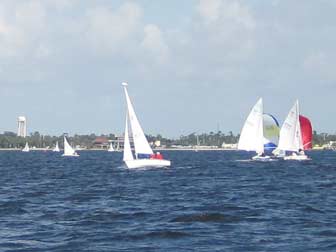
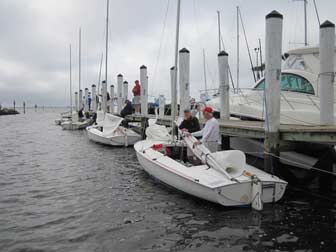
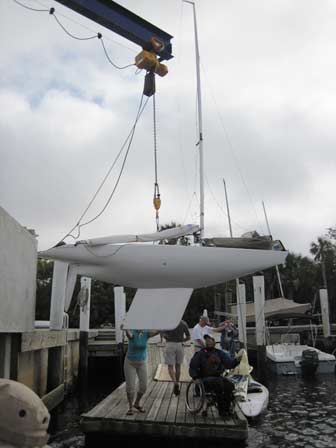
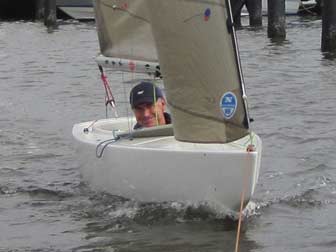
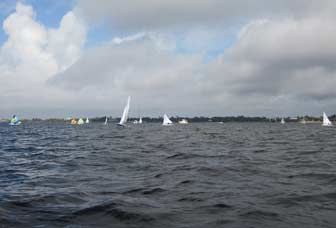
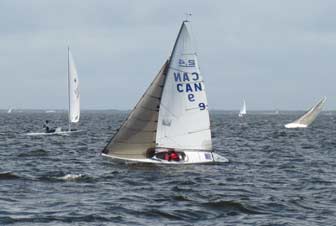
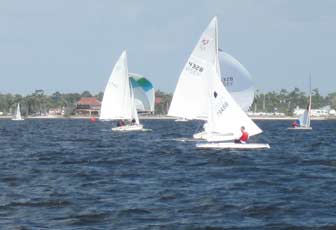
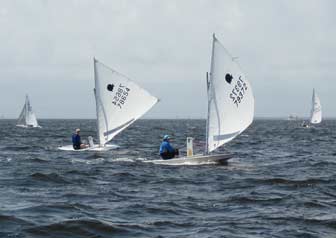
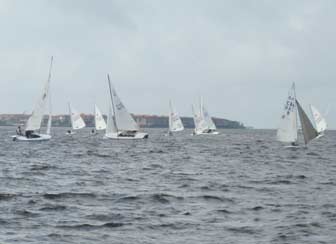
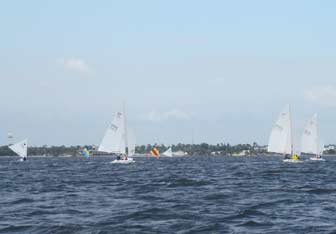
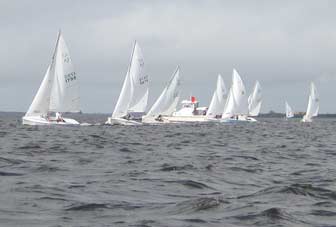
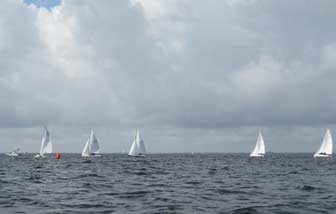
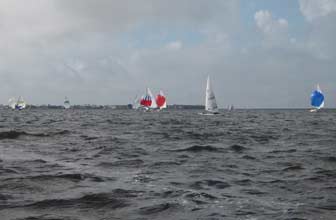
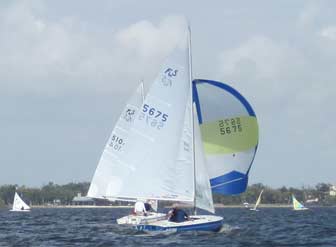
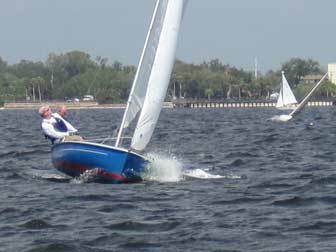
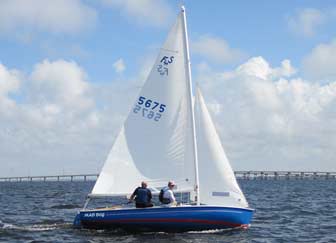
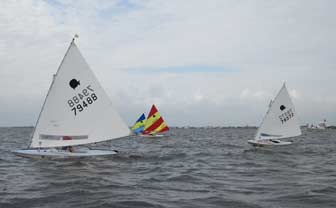
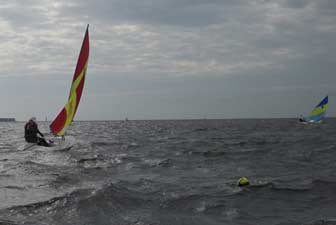
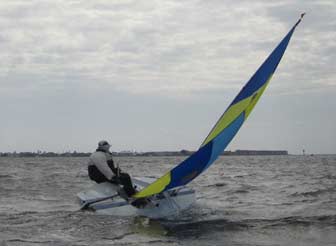
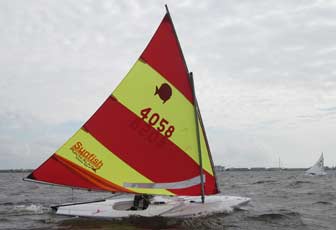
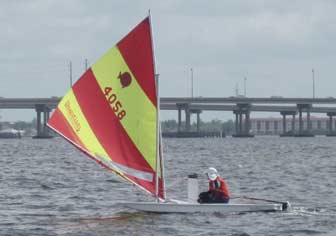
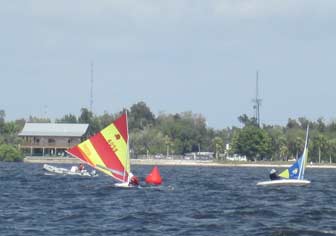
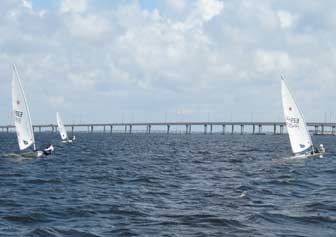
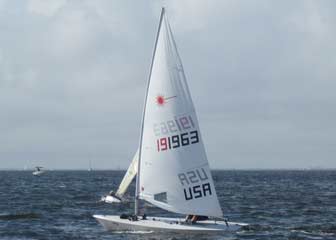
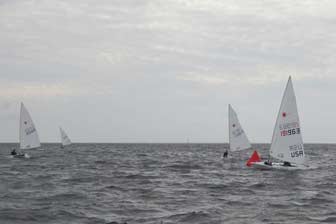
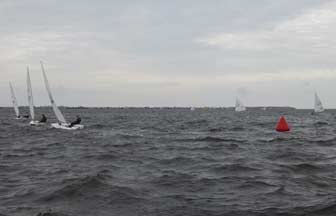
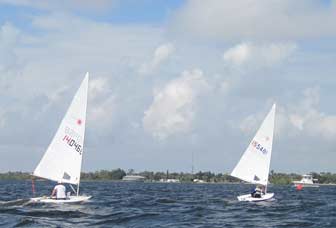
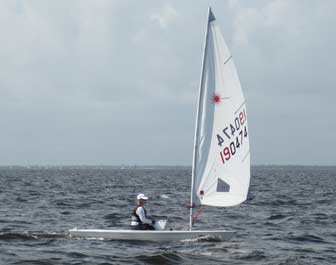
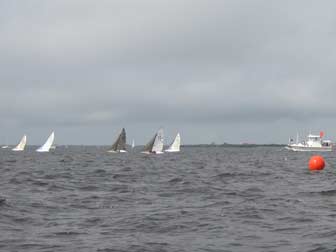
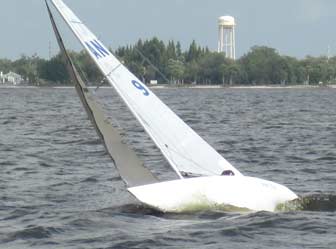
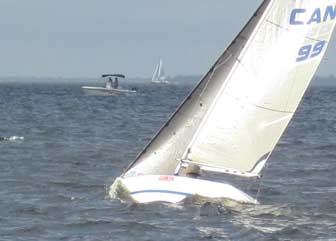
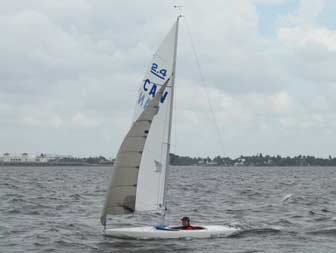
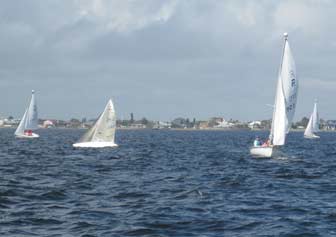
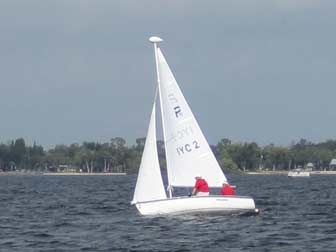
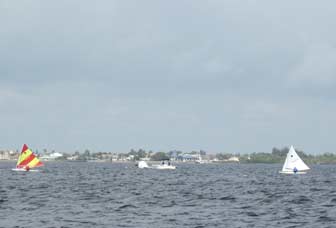
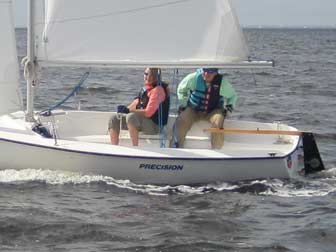
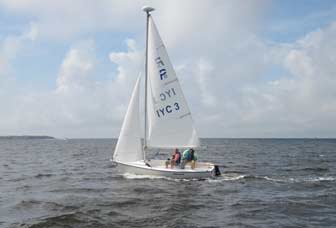
Leave a Reply
You must be logged in to post a comment.